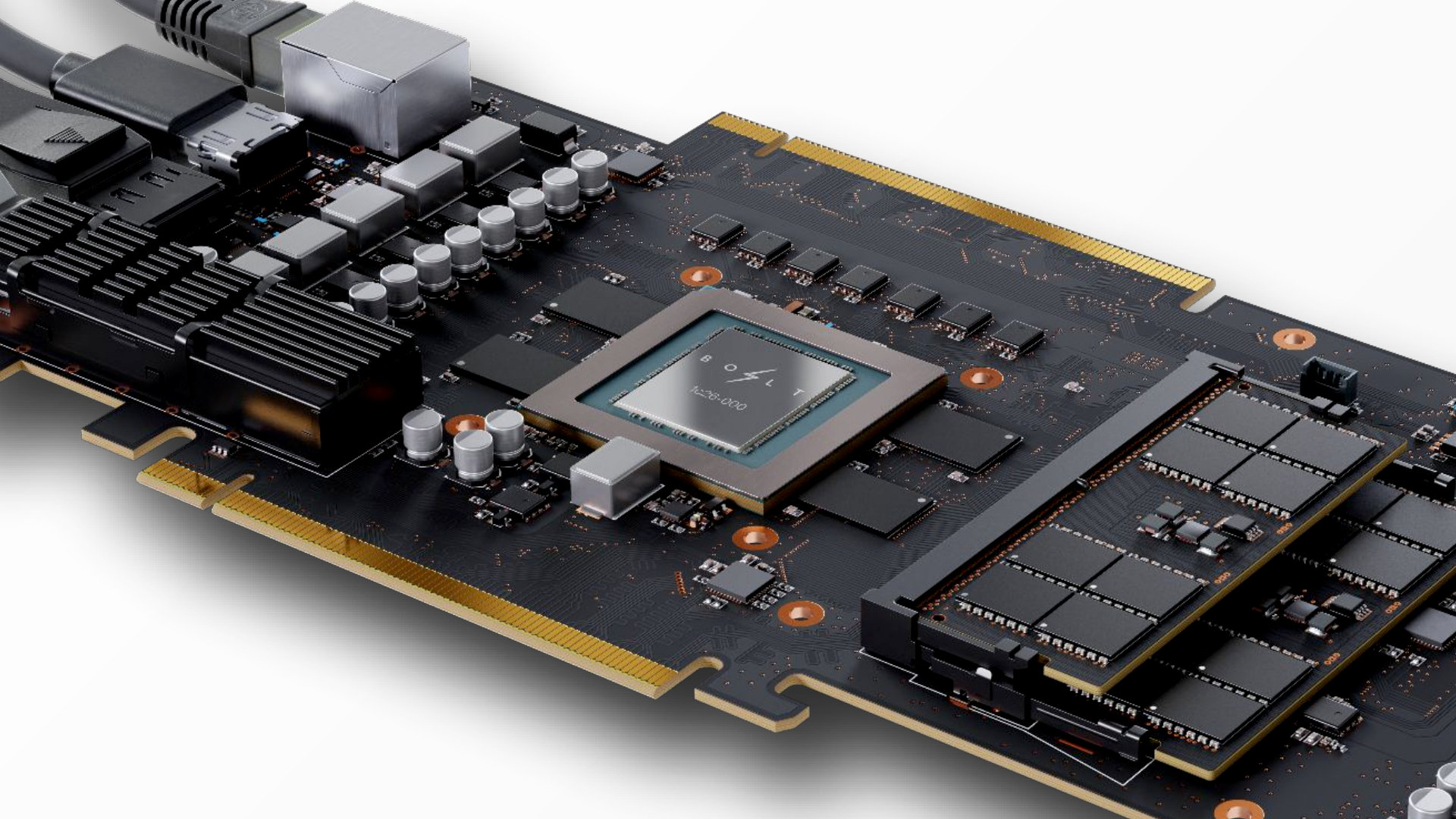
Bolt Graphics Promises Breakthrough in GPU Performance with Zeus Series
A new company, Bolt Graphics, claims its Zeus GPUs can outperform existing models like the RTX 5090 in path tracing while consuming significantly less power.
When Intel re-entered the gaming graphics card market in 2022, it sparked hopes for true competition against AMD and Nvidia in the GPU sector. However, the anticipated rivalry failed to materialize, except in the entry-level market. Yet, one new company believes it can render RTX 50-series models obsolete.
The company in question is Bolt Graphics, which has recently revealed a series of claims about its Zeus line of GPUs (via TechPowerUp). The graphics cards offer a unique design, which Bolt Graphics outlines in their technical document (PDF). The details reveal a notable performance boost over Nvidia’s RTX 4090, 5080, and 5090.
Performance Comparison
| Metric | Zeus 1c26-32 | Zeus 2c26-128 | GeForce RTX 5090 |
|---|---|---|---|
| Vector TFLOPS (FP64/FP32/FP16) | 5 / 10 / 20 | 10 / 20 / 40 | 1.6 / 105 / 105 |
| Matrix TOPS (FP16/INT8) | 307 / 614 | 614 / 1229 | 818 / 1637 |
| Path Tracing | 77 Gigarays | 154 Gigarays | 32 Gigarays |
| On-chip Cache | 128 MB | 256 MB | 120 MB |
| VRAM Amount | 32 GB LPDDR5X | 128 GB LPDDR5X | 32 GB GDDR7 |
| VRAM Bandwidth | Up to 363 GB/s | Up to 725 GB/s | 1790 GB/s |
| Board Power | 120 W | 250 W | 575 W |
The innovative architecture of the Bolt Zeus Cluster features a combination of a single-threaded CPU and a separated vector core. These chips also include extensive caching, multiple memory slots, and even a routing system.
Performance Claims
The performance metrics stated by Bolt Graphics are theoretical and derived from their design software, lacking real-world testing results. The Zeus GPU is claimed to excel at path tracing, showing up to 2.5 times better performance compared to the RTX 5090 while using 80% less power. While this could indicate the possibility of specialized chips performing exceptionally in ray tracing, such capability doesn’t always translate to overall gaming performance, especially when current game engines rely heavily on FP32 performance.
For instance, the four-die 4c26-256 Zeus card achieves 40 TFLOPs in FP32, whereas the RTX 5090 surpasses this with an impressive 105 TFLOPs. Furthermore, the single-chip 1c26-32 offers just 10 TFLOPS in FP32, falling below several existing models.
The VRAM strategy also diverges from standard practices, opting for LPDDR5X, which isn’t as fast compared to the GDDR7 found in the RTX 5090. The latter’s memory operates at 28 Gbps, while LPDDR5X hits a maximum of only 8.53 Gbps.
As for the production timeline, Bolt Graphics plans to release developer kits by Q4 2025, with public PCIe card and server rack models expected a year later. However, the effectiveness of these GPUs will heavily rely on driver support, which has historically been a challenge for new hardware in the gaming industry.
